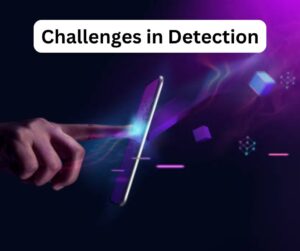
Deepfake Detection: The Key to Digital Integrity
In the time of quickly propelling innovation, deepfakes exceptionally sensible computerized manufactures of sound, video, or pictures represent a developing test to cultural trust.
These counterfeit manifestations can control content to trick crowds, spread deception, and subvert public certainty.
As deepfakes become progressively complex, identifying them is fundamental for guaranteeing a reliable computerized future.
Figuring out Deepfakes

Deepfakes are made utilizing man-made brainpower (simulated intelligence), especially through generative ill-disposed networks (GANs).
GANs comprise of two brain organizations: one creates counterfeit substance, and the other assesses its credibility.
After some time, this iterative interaction produces content so reasonable that it very well may be undefined from certified material.
Utilizations of deepfake innovation are not malevolent all of the time.
In diversion, it is utilized to reproduce perished entertainers, upgrade enhancements, or name voices in various dialects.
The Danger Landscape

Deepfakes undermine people, associations, and state run administrations the same.
For people, they can prompt personality misrepresentation, notoriety harm, and cyberbullying.
For associations, deepfake tricks, for example, counterfeit Chief recordings can bring about monetary misfortunes.
On a cultural level, deepfakes can be weaponized to make political mayhem by creating explanations from pioneers or controlling general assessment during decisions.
One striking model was a deepfake video of previous U.S. President Barack Obama, in which he seemed to make statements he won’t ever do.
While this video was a showing of the innovation’s true capacity, it featured how effectively such instruments could be abused.
The Requirement for Detection

To protect computerized trust, the capacity to distinguish deepfakes is principal.
Without dependable location techniques, deepfakes could disintegrate the validity of real media, making individuals incredulous of all that they see or hear on the web.
This peculiarity, frequently alluded to as the “liar’s profit,” establishes a climate where even honest data can be excused as phony.
Mechanical Solutions

1. AI-Fueled Discovery Tools:
Similarly as artificial intelligence makes deepfakes, it can likewise identify them.
Computer based intelligence calculations can recognize unpretentious irregularities in controlled content, like unnatural flickering examples, sporadic lighting, or irregularities in lip development and discourse.
2. Blockchain for Verification:
Blockchain innovation can assist with confirming the genuineness of computerized content by making an unchanging record of its starting point and adjustments.
This guarantees that any altering can be followed.
3. Watermarking:
Implanting imperceptible watermarks in true satisfied can assist with separating it from deepfakes.
These watermarks are challenging to recreate, making counterfeit substance simpler to recognize.
The Job of Instruction and Policy

Mechanical apparatuses alone are sufficiently not.
Public mindfulness is critical to help people perceive and answer deepfakes.
Media education projects ought to show individuals how to basically assess online substance, check sources, and recognize potential deepfakes.
Legislatures likewise assume an indispensable part. Guidelines focusing on the creation and spread of malevolent deepfakes can go about as a hindrance.
For example, a few purviews have presented regulations punishing the utilization of deepfakes for badgering or deception.
Challenges in Detection

In spite of progressions, identifying deepfakes stays testing.
As recognition strategies improve, so do the devices for making additional persuading fakes.
This continuous waiting game requires constant development.
Moreover, there is a requirement for worldwide coordinated effort to resolve jurisdictional issues, as deepfake makers frequently work across borders.
A Cooperative Future

The battle against deepfakes is an aggregate liability.
Tech organizations should keep on developing recognition advancements, state run administrations should execute vigorous approaches, and people should remain informed.
Organizations between the scholarly world, industry, and policymakers can speed up the advancement of arrangements.
Conclusion
Recognizing deepfakes isn’t just about fighting phony substance; it is tied in with safeguarding trust in the computerized age.
As innovation develops, society should guarantee that the apparatuses intended to engage and illuminate don’t become weapons of misdirection.
By putting resources into discovery innovations, encouraging public mindfulness, and instituting viable strategies, we can construct a dependable computerized future.
In our current reality where seeing is done accepting, carefulness, development, and cooperation are our most grounded safeguards against the deepfake danger.
